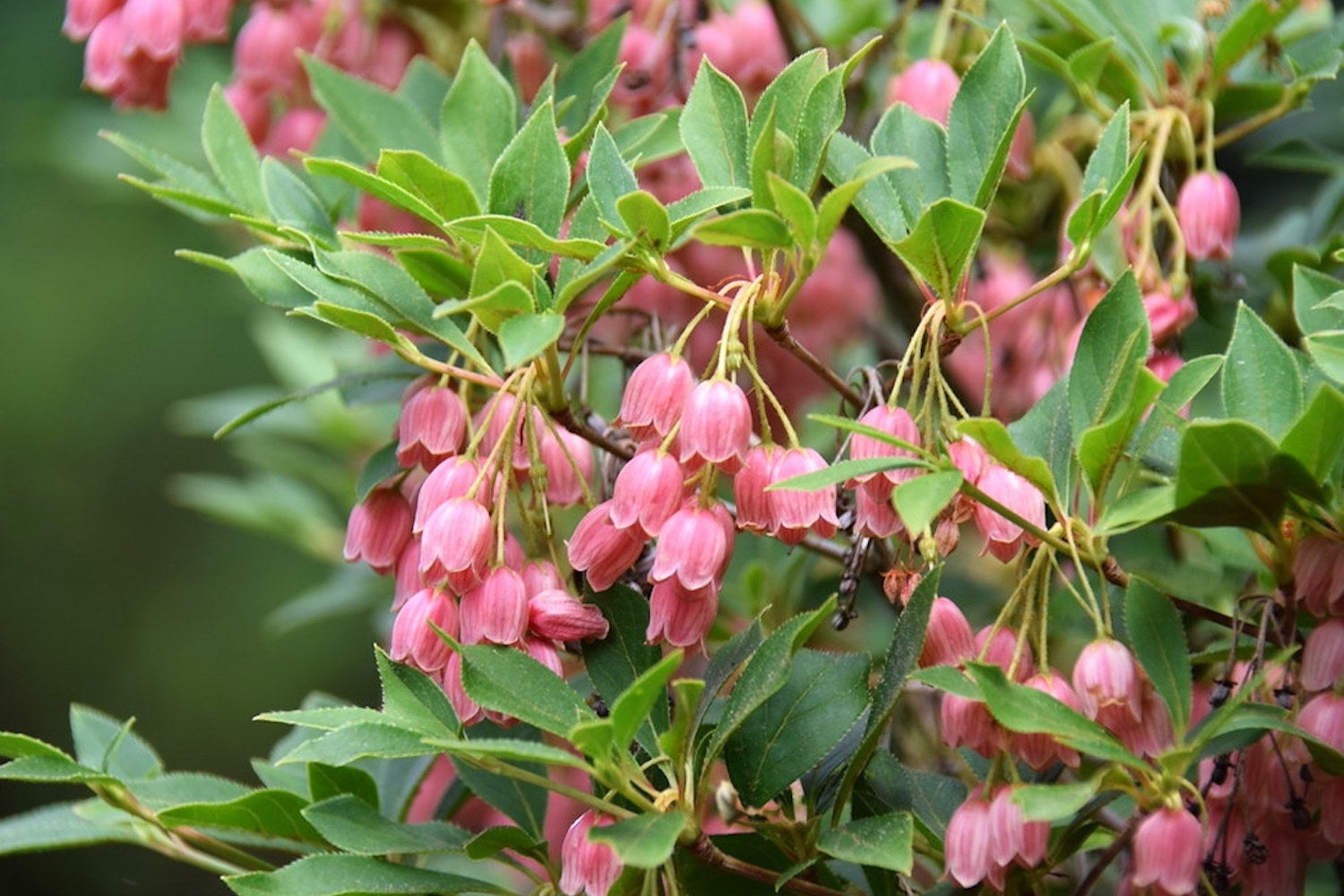Enkianthus campanulatus 'Red Bells'
Approx. 0.5 litre pot
About this cultivar:
Enkianthus campanulatus 'Red Bells' is a cultivar of Enkianthus campanulatus that has slightly redder flowers than the species.
More about the species below:
Enkianthus campanulatus is a large deciduous shrub of elegantly erect habit, with small elliptic leaves turning a wonderful bright red, orange and yellow in autumn. Clusters of small cream, whittish or reddish, bell-shaped flowers from late spring to mid-summer. Commonly called redvein enkianthus because of the veins on the flowers, the species name comes from the Latin word campanulatus meaning bell-shaped in reference to the shape of the flowers.
The combination of fantastic flowers and autumn colour make this a must have.
It is native to open woodlands in Japan, and every now and then can grow huge is size. At Gravetye Manor in Sussex one was recorded at 5m tall and at Polly Hill Arboretum, Massachusetts one was measured at 9.4m tall. Results may vary, but you'll likely have to wait 50 years...
- Position: Full sun, partial shade
- Soil: Almost any soil, grows well in Ballyrobert
- Flowers: April, May, June
- Other features: Grows well in Ballyrobert
- Hardiness: Fully hardy, grows well in Ballyrobert, H5 - Hardy in most places throughout the UK even in severe winters (-15 to -10°C)
- Habit: Clump forming, bushy
- Foliage: Deciduous
- Height: 200 - 400 cm (6.5 - 13 ft) Prune!
- Spread: 200 - 400 cm (6.5 - 13 ft) Prune!
- Time to full growth: 20 to 50 years
- Plant type: Herbaceous Perennial, shrub, tree
- Colour: Green, yellow, red, orange, white
- Goes well with: -
About this genus:
Enkianthus is a genus of deciduous shrubs and small trees in the in the heather family (Ericaceae). That is quite a large family so that info might not help you place it, but I think of them much like Vaccinium (cranberry, blueberry, bilberry, etc) with inedible fruits, better flowers, and better autumn colour.
First introduced into England by botanist Charles Maries in the late 1800’s from a plant collection trip to Asia. The genus was first described by Portuguese Jesuit mathematician and naturalist João de Loureiro (1717-1791) in the 1790 publication of his work ‘Flora Cochinchinensis’ (translates as ‘Flowers of Vietnam’). He lived in Vietnam for over 40 years and his garden eventually contained over 1,000 unique species, many described in his 1790 book, making João one of the greatest botanist collectors of the 18th century. The name he gave this genus comes from the Greek words ‘enkyos’ meaning pregnant and ‘anthos’ meaning flower, in reference to prominent swelling at the base of some species flowers.
As you might guess by now the native range of Enkianthus is in Asia, as far west as the eastern Himalayas, as far south as Vietnam, and as far north and east as China and Japan. There is anything from 9-17 species, and guess what, DNA and morphology research is changing this all the time.
Depending on the species they can grow just over knee-height or two storeys high. Blooming in spring to summer they have clusters or racemes of long stemmed pendulous bell-shaped five-lobed (campanulate) flowers, usually some combination of red or white. The effect is between a rather lovely chandelier and a rather lovely bunch of pinkish grapes. The seed come as dried out capsules as opposed to soft fruits. Green whorl-like arrangement of toothed leaves eventually produce amazing autumn colour. This can be bright orange, yellow, or red depending on the species. If you like Acers and Prunus in the autumn, you’ll like Enkianthus.
Easy to grow, they will do well anywhere that isn’t completely shaded, but will naturally have more flowers and better autumn colour if you can put them in full sun. Like other genus in the Ericaceae family they prefer soil not to be chalky. We find they are not fussy at all and even seem to tolerate wet.
How to use them? That’s easy, with such a versatile plant you can put them anywhere. Back of the border- get foliage and autumn colour. Front of a border - get the alluring flowers and seed heads. Or grow as a specimen plant to get it all!


